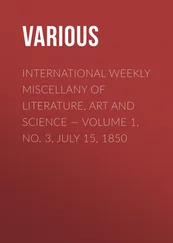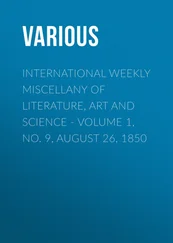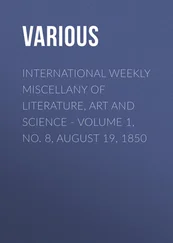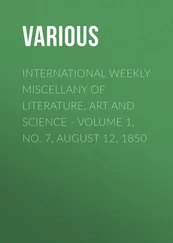James Fyfe - Triumphs of Invention and Discovery in Art and Science
Здесь есть возможность читать онлайн «James Fyfe - Triumphs of Invention and Discovery in Art and Science» — ознакомительный отрывок электронной книги совершенно бесплатно, а после прочтения отрывка купить полную версию. В некоторых случаях можно слушать аудио, скачать через торрент в формате fb2 и присутствует краткое содержание. Жанр: foreign_antique, foreign_prose, на английском языке. Описание произведения, (предисловие) а так же отзывы посетителей доступны на портале библиотеки ЛибКат.
- Название:Triumphs of Invention and Discovery in Art and Science
- Автор:
- Жанр:
- Год:неизвестен
- ISBN:нет данных
- Рейтинг книги:4 / 5. Голосов: 1
-
Избранное:Добавить в избранное
- Отзывы:
-
Ваша оценка:
- 80
- 1
- 2
- 3
- 4
- 5
Triumphs of Invention and Discovery in Art and Science: краткое содержание, описание и аннотация
Предлагаем к чтению аннотацию, описание, краткое содержание или предисловие (зависит от того, что написал сам автор книги «Triumphs of Invention and Discovery in Art and Science»). Если вы не нашли необходимую информацию о книге — напишите в комментариях, мы постараемся отыскать её.
Triumphs of Invention and Discovery in Art and Science — читать онлайн ознакомительный отрывок
Ниже представлен текст книги, разбитый по страницам. Система сохранения места последней прочитанной страницы, позволяет с удобством читать онлайн бесплатно книгу «Triumphs of Invention and Discovery in Art and Science», без необходимости каждый раз заново искать на чём Вы остановились. Поставьте закладку, и сможете в любой момент перейти на страницу, на которой закончили чтение.
Интервал:
Закладка:
The type employed differs slightly from that in common use. The letter should have no shoulder, but should rise in a straight line from the foot; the spaces, leads, and quadrats are of the same height as the stem of the letter; the object being to diminish the number and depth of the cavities in the page, and thus lessen the chances of the mould breaking off and remaining in the form. Each page is corrected with the utmost care, and "imposed" in a small "chase" with metal furniture (or frame-work), which rises to a level with the type. Of course the number of pages in the form will vary according to the size of the book; a sheet being folded into sixteen leaves, twelve, eight, four, or two for 16mo, 12mo, 8vo, quarto, or folio.
Having our pages of type in complete order, we now proceed to rub the surface with a soft brush which has been lightly dipped into a very thin oil. Plumbago is sometimes preferred. A brass rectangular frame of three sides, with bevelled borders adapted to the size of the pages, is placed upon the chase so as to enclose three sides of the type, the fourth side being formed by a single brass edge, having the same inward sloping level as the other three sides. The use of this frame is to determine the size and thickness of the cast, which is next taken in plaster-of-paris – two kinds of the said plaster being used; the finer is mixed, poured over the surface of the type, and gently worked in with a brush so as to insure its close adhesion to the exclusion of bubbles of air; the coarser, after being mixed with water, is simply poured and spread over the previous and finer stratum.
The superfluous plaster is next cleared away; the mould soon sets; the frame is raised; and the mould comes off from the surface of the type, on which it has been prevented from encrusting itself by the thin film of oil or plumbago.
The next step is to dress and smoothen the plaster-mould, and set it on its edge in one of the compartments of a sheet-iron rack contained in an oven, and exposed, until perfectly dry, to a temperature of about 400°. This occupies about two hours. A good workman, it is said, will mould ten octavo sheets, or one hundred and sixty pages in a day: each mould generally contains a couple of octavo pages.
In the state to which it is now brought, the mould is exceedingly friable, and requires to be handled with becoming care. With the face downwards it is placed upon the flat cast-iron floating-plate , which, in its turn, is set at the bottom of a square cast-iron tray, with upright edges sloping outwards, called the "dipping pan." It has a cast-iron lid, secured by a screw and shackles, not unlike a copying machine. This pan having been heated to 400°, it is plunged into an iron pot containing the melted alloy, which hangs over a furnace, the pan being slightly inclined so as to permit the escape of the air. A small space is left between the back or upper surface of the mould, and the lid of the dipping-pan, and the fluid metal on entering into the pan through the corner openings, floats up the plaster together with the iron plate (hence called the floating-plate ) on which the mould is set, with this effect, that the metal flows through the notches cut in the edge of the mould, and fills up every part of it, forming a layer of metal on its face corresponding to the depth of the border, while on the back is left merely a thin metallic film.
The dipping-pan, says Tomlinson, is suspended, plunged in the metal, and removed by means of a crane; and when taken out, is set in a cistern of water upon supports so arranged that only the bottom of the pan comes in contact with the surface of the water. The metal thus sets , or solidifies, from below, and containing fluid above, maintains a fluid pressure during the contraction which accompanies the cooling.
As it thus shrinks in dimensions, molten metal is poured into the corners of the pan for the purpose of maintaining the fluid pressure on the mould, and thus securing a good and solid cast. For if the pan were allowed to cool more slowly, the thin metallic film at the back of the inverted plaster mould would probably solidify first, and thus prevent the fluid pressure which is necessary for filling up all the lines of the mould.
Tomlinson concludes his description of these interesting processes by informing us that an experienced and skilled workman will make five dips, each containing two octavo pages, in the course of an hour, or, as already stated, at the rate of nearly ten octavo sheets a day.
When the pan is opened, the cake of metal and plaster is removed, and beaten upon its edges with a mallet, to clear away all superfluous metal. The stereotype plate is then taken by the picker , who planes its edges square, "turns" its back flat upon a lathe until the proper thickness is obtained, and removes any minute imperfections arising from specks of dirt and air-bubbles left among the letters in casting the mould. Damaged letters are cut out, and separate types soldered in as substitutes. After all this anxious care to obtain perfection, the plate is pronounced ready for working, and when made up with the other plates into the proper form, it may be worked either at the hand-press or by machine.
Other modes of stereotyping have been introduced, but not one has attained to the popularity of the method we have just described.
The Steam Engine
"It is said that ideas produce revolutions and truly they do – not spiritual ideas only, but even mechanical." – Carlyle.
I. – THE MARQUIS OF WORCESTER
As the last century was drawing to its close, two great revolutions were in progress, both of which were destined to exercise a mighty influence upon the years to come, – the one calm, silent, peaceful, the other full of sound and fury, bathed in blood, and crowned with thorns, – the one the fruit of long years of patient thought and work, the other the outcome of long years of oppression, suffering, and sin, – the one was Watt's invention of the steam engine, the other the great popular revolt in France. These are the two great events which set their mark upon our century, gave form and colour to its character, and direction to its aims and aspirations. In the pages of conventional history, of course, the French revolution, with its wild phantasmagoria of retribution, its massacres and martyrdoms, will no doubt have assigned to it the foremost rank as the great feature of the era, —
"For ever since historians writ,
And ever since a bard could sing,
Doth each exalt with all his wit
The noble art of murdering."
But those who can look below the mere surface of events, and whose fancy is not captivated by the melo-drama of rebellion, and the pageantry of war, will find that Watt's steam machine worked the greatest revolution of modern times, and exercised the deepest, as well as widest and most permanent influence over the whole civilized world.
Like all great discoveries, that of the motive power of steam, and the important uses to which it might be applied, was the work, not of any one mind, but of several minds, each borrowing something from its predecessor, until at last the first vague and uncertain Idea was developed into a practical Reality. Known dimly to the ancients, and probably employed by the priests in their juggleries and pretended miracles, it was not till within the last three centuries that any systematic attempt was made to turn it to useful account.
But before we turn our attention to the persons who made, and, after many failures and discouragements, successfully made this attempt, it will be advisable we should say something as to the principle on which their invention is founded.
The reader knows that gases and vapours, when imprisoned within a narrow space, do struggle as resolutely to escape as did Sterne's starling from his cage. Their force of pressure is enormous, and if confined in a closed vessel, they would speedily rend it into fragments. Let some water boil in a pipkin whose lid fits very tightly; in a few minutes the vapour or steam arising from the boiling water, overcoming the resistance of the lid, raises it, and rushes forth into the atmosphere.
Читать дальшеИнтервал:
Закладка:
Похожие книги на «Triumphs of Invention and Discovery in Art and Science»
Представляем Вашему вниманию похожие книги на «Triumphs of Invention and Discovery in Art and Science» списком для выбора. Мы отобрали схожую по названию и смыслу литературу в надежде предоставить читателям больше вариантов отыскать новые, интересные, ещё непрочитанные произведения.
Обсуждение, отзывы о книге «Triumphs of Invention and Discovery in Art and Science» и просто собственные мнения читателей. Оставьте ваши комментарии, напишите, что Вы думаете о произведении, его смысле или главных героях. Укажите что конкретно понравилось, а что нет, и почему Вы так считаете.












